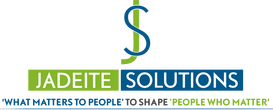A Project Manager’s approach to Disaster Management
Disaster management is a crucial component in any organizational, corporate or governmental strategic plan. It involves dealing with risks of high magnitude, which may be the result of natural or man-made disasters; and aims for capacity building in disaster resiliency and crisis response.
National Disaster Management Authority (NDMA) is an agency of the Ministry of Home Affairs established through the Disaster Management Act enacted by the Government of India in December 2005. The agency is responsible for framing policies, laying down guidelines and best-practices and coordinating with the State Disaster Management Authorities (SDMAs) to ensure a holistic and distributed approach to disaster management through the expertise of its members in areas such as, planning, infrastructure management, communications, meteorology and natural sciences. NDMC is mandated to lay down the policies, plans and guidelines for Disaster Management to ensure timely and effective response to disasters.
This looks good on paper. But whenever we have a situation like floods, drought or earthquake, the agency is conspicuous by its absence – the army is called upon to assist, while the state machinery watches helplessly. And to top it all, our most trustworthy force does not have any training in disaster management, apart from a few sessions and the ability to ‘think on the feet’.
So how can the best practices of project management salvage these situations? By applying the time tested techniques of Risk Management.
It begins with ‘Plan Risk Management’. Here we are not talking about abstract plans and detailed studies leading to analysis paralysis, but a practical approach aimed to answer a few basic questions:
- Define approaches; tools and data sources to be used to perform risk management. A lot of research has already been done and now we can reasonably predict the likelihood of an event before it actually occurs.
- Define when and how often risk management processes will be performed. Frankly, a lot more discipline needs to go here, so we take a holistic view rather than focus on a few parameters, and maintain a rigor of periodic review at predetermined intervals.
- Group risk categories based on potential cause of risk. A risk breakdown structure helps identify the sources of risk. A clear definition of objectives helps chart out the action plan. We display a great focus on short-term objectives, completely ignoring the long term ones, resulting in periodic re-occurrence of calamities claiming a huge toll on life and property.
- Define the lead; support and risk management team members for each type of activity in the risk management plan, and provides accountability by clarifying their responsibilities
- Estimate funds required, based on assigned resources and establishes protocol for their application
- Defining risk probability and impact helps establish objectivity in approach
- Develop a grid for mapping the probability of each risk occurrences and its impact if that risk occurs. Risks are prioritized according to their potential implications for having an effect on objectives defined. A typical approach to prioritizing risks is to use a lookup table or a probability and impact matrix. The specific combinations of probability and impact that lead to the risk being rated as “high”, “moderate”, or “low” importance need to be set up
- Develop a reporting formats and tracking framework within which the risk management activities are sought to be performed.
Next we need to ‘identify the risk’ and document the same in a ‘risk register’, which needs to be maintained and updated in accordance to the risk management plan outlined above. A risk register contains a list of risk identified (Cause => Event => Impact => Effect); along with list of potential responses.
This is followed by ‘risk analysis’ to ascertain the likely occurrences of risks listed in the risk register. As can be seen, this is a proactive approach rather than a reactive one – aimed at preparing before the disaster occurs, rather than reacting after the damage is done.
The most important part is ‘plan risk response’ in accordance with the broad outline laid down in the risk management plan. Strategies for negative risks or threats include Avoid; Transfer; Mitigate or Accept. Let’s take a minute to examine what this means to us.
- Avoid: Evaluate whether the situation be avoided? A lot of natural disasters cannot be avoided while a few man-made ones definitely can. The flood situation has worsened due to depletion of green cover (trees) and human settlement in the low-lying river catchment area. We have the requisite laws in place but they have not been implemented effectively due to vested interests of a few. This may need to change for the general good of all concerned.
- Mitigate: Can the impact be reduced? A resounding yes in most situations if proactive steps are put in place and the people responsible for implementation do their part at the apt time.
- Accept: Currently we are forced to accept all the risks since there is very little done to ‘avoid’ or ‘mitigate’ the disasters that occur. This can be addressed proactively once the roles and responsibilities are clearly defined and adequate authority given (as per the risk management plan discussed previously) to concerned persons for delivering what is expected of them, and holding them accountable for lapses if any.
- Transfer: we may find innovative ways to transfer the risk, though the avenues available may be very limited.
Finally, we have to ‘control risk’ which is a process of implementing risk response plans, tracking identified risks, monitoring residual risks, and evaluating risk process effectiveness on an ongoing basis.
In the words of Michael Jordan – “I can accept failure, but I can’t accept not trying”
Tags: Disaster management; Process management; Strategic planning; Risk analysis






